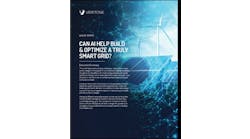January 4, 2012
Americans tend to beat themselves up over their imperfections. We eat too much, watch too much TV and owe China too much money. Despite all of our sloth, we can feel good about one area: our progress saving energy.
A report issued this week by the Institute for Electric Efficiency found that we saved enough electricity to power almost 10 million homes in 2010 (about 112 TWh). That’s 21 percent better than we did the previous year. And it looks like when 2011 data comes out, we’ll have done even better.
You’re saying, “Who me? Not possible. I forget to shut off the lights, my computer stays on all the time and my kids won’t get off the Xbox.”
Therein lies the beauty of energy efficiency today; it requires no huge effort on our part. New appliances, light bulbs, thermostats, heating and cooling systems and electric gadgets are increasingly designed with energy efficiency in mind. Those with an energy conscience don’t have to fumble in the dark and cold.
The report studied programs offered by utilities, which spent $4.8 billion in 2010 on energy efficiency, about 28 percent more than the previous year, and $6.8 billion in 2011, a 25 percent increase. Utilities are expanding their energy efficiency efforts so quickly that IEE expects them to surpass optimistic forecasts that they will dedicate $12 billion annually to efficiency by 2020.
“This steady increase in electricity savings is really impressive. And the growth in electric utility expenditures for energy efficiency is the major reason behind it,” said Lisa Wood, IEE Executive director. (No relationship to me.)
Efficiency is considered a good investment because it’s cheaper to save energy then make energy. The report pegs the cost of saving energy at 3.5 to 4.3 cents/kWh. Check your utility bill – chances are buying electricity costs you a great deal more.
Our success stems from energy efficiency resource standards, which are savings requirements set by state governments. Typically, the requirements mandate that utilities save a set percentage of energy annually. About half of the states, representing two-thirds of the US’ population, now have these standards, according to IEE.
Some states and regions are doing better than others when it comes to energy efficiency. California continues to be the top state when it comes to spending on energy efficiency, with a budget of $1.5 billion, well above second place state, New York, with $1 billion. The Pacific Northwest follows with about $559 million, and then comes Massachusetts, Florida, New Jersey, Pennsylvania, Maryland, Ohio and Arizona.
California’s effort is particularly impressive in light of its demographics. While its electric efficiency budget represents 22.6% of total U.S. utility electric efficiency budgets, it uses only 6.9 percent of US electricity and its share of the population is only 12.1 percent, according to IEE.
Several states that did not make the top 10 are quickly improving their programs. The IEE report found that five states have doubled their energy efficiency budgets for 2011. These states are Indiana, North Dakota, South Dakota, Virginia, and West Virginia. Washington, DC also doubled its budget.






